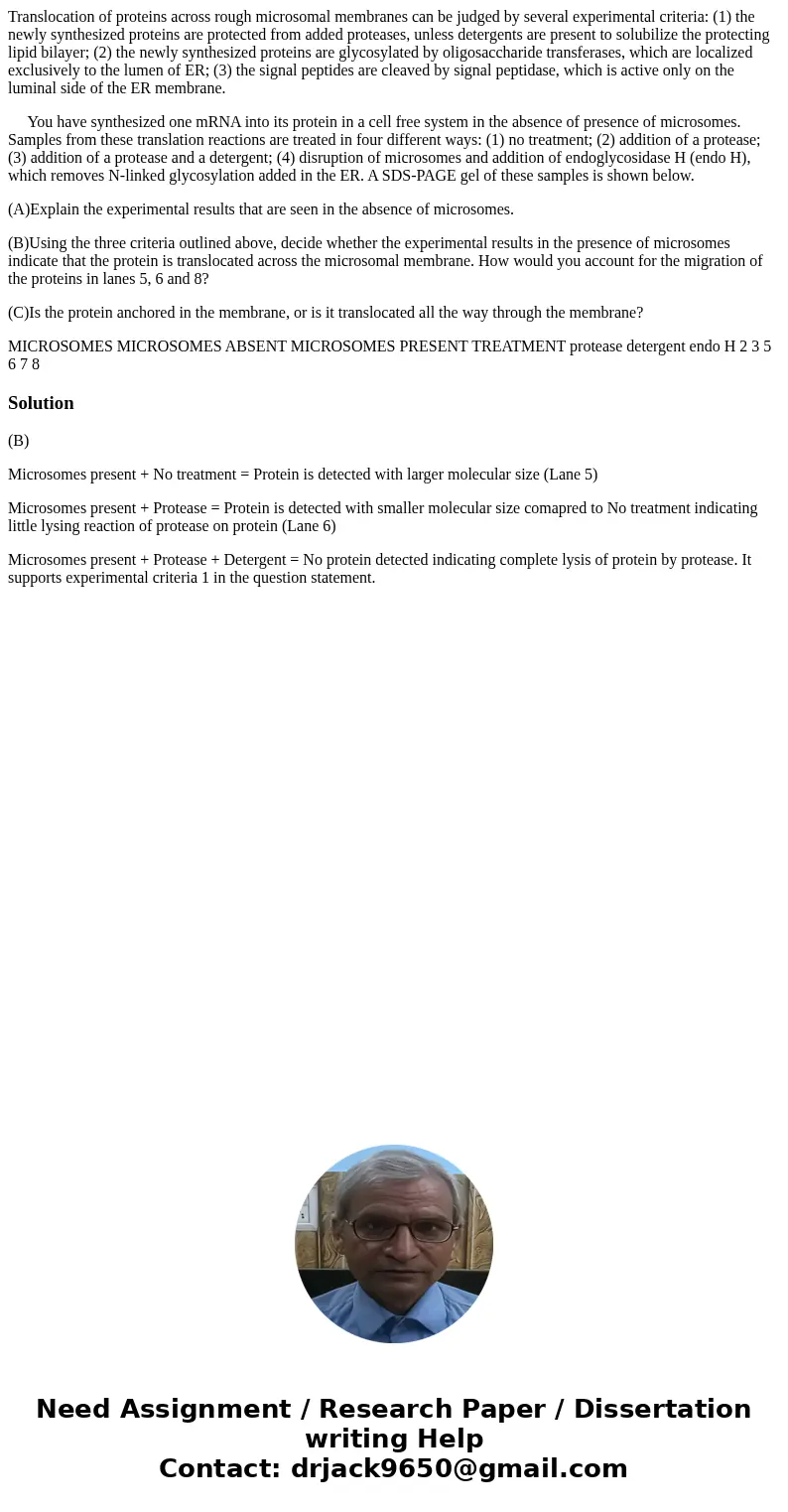Translocation of proteins across rough microsomal membranes
Translocation of proteins across rough microsomal membranes can be judged by several experimental criteria: (1) the newly synthesized proteins are protected from added proteases, unless detergents are present to solubilize the protecting lipid bilayer; (2) the newly synthesized proteins are glycosylated by oligosaccharide transferases, which are localized exclusively to the lumen of ER; (3) the signal peptides are cleaved by signal peptidase, which is active only on the luminal side of the ER membrane.
You have synthesized one mRNA into its protein in a cell free system in the absence of presence of microsomes. Samples from these translation reactions are treated in four different ways: (1) no treatment; (2) addition of a protease; (3) addition of a protease and a detergent; (4) disruption of microsomes and addition of endoglycosidase H (endo H), which removes N-linked glycosylation added in the ER. A SDS-PAGE gel of these samples is shown below.
(A)Explain the experimental results that are seen in the absence of microsomes.
(B)Using the three criteria outlined above, decide whether the experimental results in the presence of microsomes indicate that the protein is translocated across the microsomal membrane. How would you account for the migration of the proteins in lanes 5, 6 and 8?
(C)Is the protein anchored in the membrane, or is it translocated all the way through the membrane?
MICROSOMES MICROSOMES ABSENT MICROSOMES PRESENT TREATMENT protease detergent endo H 2 3 5 6 7 8Solution
(B)
Microsomes present + No treatment = Protein is detected with larger molecular size (Lane 5)
Microsomes present + Protease = Protein is detected with smaller molecular size comapred to No treatment indicating little lysing reaction of protease on protein (Lane 6)
Microsomes present + Protease + Detergent = No protein detected indicating complete lysis of protein by protease. It supports experimental criteria 1 in the question statement.

 Homework Sourse
Homework Sourse